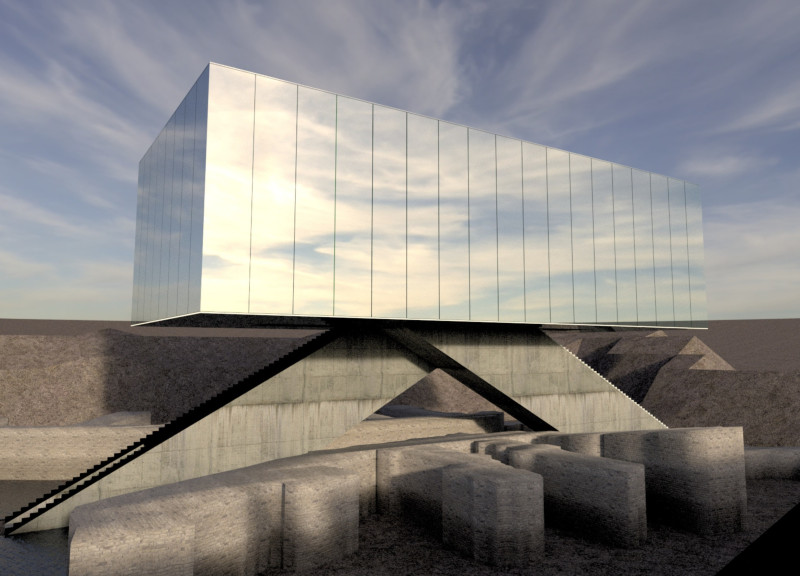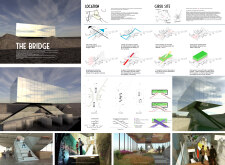5 key facts about this project
The pavilion of humanity is located at the archaeological site of Girsu in Iraq, a place rich in historical significance. It serves as a space for reflection, exploring the stories of human civilization and highlighting both its accomplishments and setbacks over the past 5,700 years. The overall design concept focuses on integrating different areas to foster a connection with history while inviting contemporary thought.
Design Elements
Three main components make up the pavilion. The most prominent is the upper shining mirror box, which acts as a visual marker visible from outside the excavation. This reflective surface is meant to blend with its surroundings and honor the site's historical context. Supporting the exhibition spaces are two diagonal concrete elements, creating a visual link to the nearby ancient bridge, which is a key feature of the area.
Exhibition and Facilities
The first floor is designed with various facilities to engage visitors. It includes a reception area and two galleries, one dedicated to showcasing humanity’s achievements and the other focused on its defeats. Additionally, there are workshops and a conference room. A café and bookshop provide spaces for visitors to relax and reflect. On the second floor, a garden of meditation encourages introspection, contrasting with the areas that present historical narratives.
Symbolic Water Feature
A significant aspect of the project is a water pool that represents the ancient river, symbolizing the continuous flow of human history. Surrounding the pool are two ascending tunnels, which visually and spatially express the themes of success and failure. These tunnels guide visitors along a path that immerses them in the complex stories of humanity, prompting personal reflection on these opposing aspects.
Materiality and Context
The design incorporates materials typical of the region’s historical building methods, such as mud, reed, and bitumen. These materials connect the pavilion to the original Sumerian civilization and reflect the construction challenges faced in the marshy landscape of ancient Mesopotamia. The architectural approach highlights the importance of the site by linking the pavilion to the ancient bridge, creating a broader narrative that relates past events to present understandings of human nature.
Open-air terraces and landscaped areas create dynamic views of the surrounding site, blending the pavilion with its historic context while providing visitors a rich experience of the area’s cultural heritage.


















































